Sew in Style is a multi-platform collaboration between the MSc Fashion Management and Final Year BA Fashion Design students from the University of Lincoln. Managed by Bonnie Whitmore and Chloe Crossman.
Don't wanna be here? Send us removal request.
Text
Exhibition Day!
Come and see our students' work in the Nicola de la Haye building.
From 5pm today, the private viewing of our designers work will occur.
Tomorrow, the exhibition is available for the public to view. Their work will be on display for 1 week in the atrium.

Instagram
TikTok
Pinterest
#fashionblog#fashiondesign#fashiondesigners#fashionstudents#sewinstyle#sewinstyle2023#sewinstyleblog#universityoflincoln#bafashionlincolnuniversity#mscfashionmanagementlincolnuniversity
1 note
·
View note
Text
Fashion Through The Ages
With the rise of social media, it has become increasingly evident that fashion has evolved tremendously over the years. The trends of today differ vastly from styles of eras that have come before but also show some noticable similarities. It is perhaps important to explore different ages and eras of fashion from not just the past few decades, but also centuries. This blog will explore a selection of dress styles from past eras. Can you spot some similarities and differences to current styles?
30 B.C.:
Fashion within Ancient Greece is particularly notable in this era. Some suggest that the garments are forms of modern inspiration by virtue of their etheral looks. Women would usually wear silk and or linen due to the hot climates and the lack of need for sewing, these garments were designed for functionality in mind.
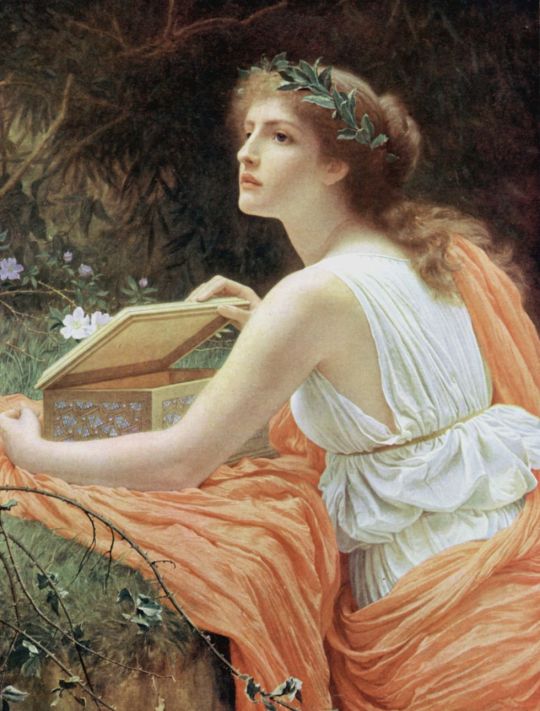
1450:
In the early medieval years, dresses had progressed to become more intricate. The heavy and ornate fabrics were synonymous with wealth and dresses began being constructured in pieces and layers.

1650:
High-waisted silhouettes synonymous with the earlier years of this decade were replaced with lower waistlines, further emphasising the waist. This became particularly popular among European nobility.

1775:
The style of the likes of Marie Antoinette of France was substantial within this era. Dresses were big, designs elaborate and the hair was high.

1790:
Nearing the end of the 18th century, women's clothing had become less structured with empire waists being the height of fashion paired with a draped, high neckline allowing for fluidity in movement.

1860:
With the USA now at war, dresses were much simpler with regards to fabric and design. Women wore full skirts made of only one material.
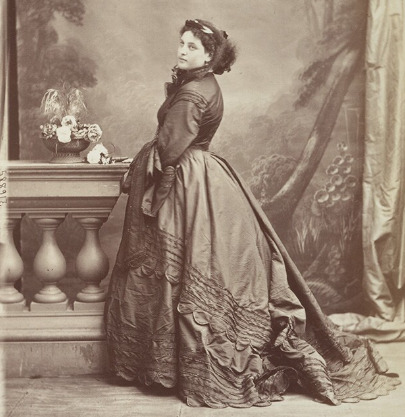
1900s:
Silhouettes were conservative in nature, adopting many layers and coverage. Nevertheless, there was a strong emphasis on slim waists, thus the encouraging of wearing corsets. The later years of this era utilised a more playful aproach including lace, ruffles, and feather details. Nevertheless, hick necks were still the norm.

1910s:
Now into the Edwardian era, dresses became boxier and looser, lace still being popular and waists still being cinchd with sashes. Notably, this is where the rise of the hemline became more obvious. This era welcomed the use of chiffon and women's silhouettes were becoming more streamlined.
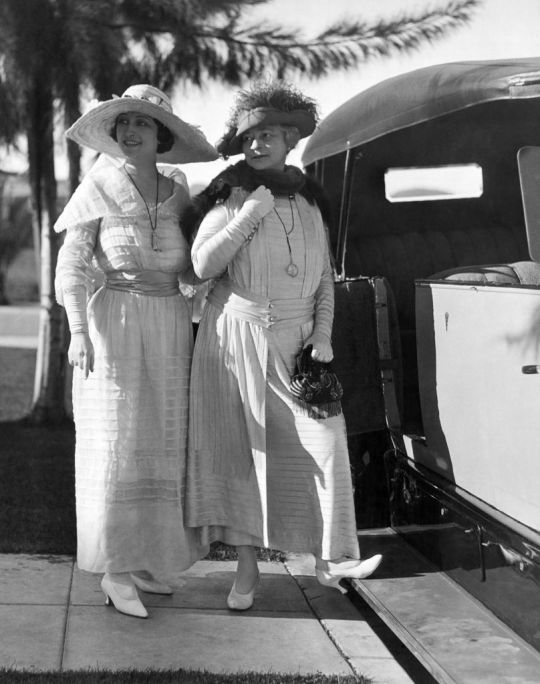
1920s:
The infamous flapper craze of the Roaring 20s had blown up. Shorter hemlines, cut off right below the knee with drop waists and sleeveless. These were no longer considered scandalous. Also, with citizens experiencing a rise in wealth, luxury in fashion was also on the rise with fringes, panels and embroidery being typical of glamourous dresses.

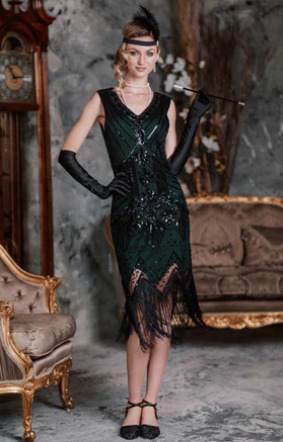
1930s:
Priorities of consumers were different as a result of the Great Depression in America, thus consumers were not spending as much money on clothing. However, for those who were not strugling as much, there were a host of new patterns and textures as well as more diverse wardrobe options, notably, trousers! Casual dresses were popping up by the mid-30s. A dress with a belt at the waist and buttons up the front became the height of fashion!
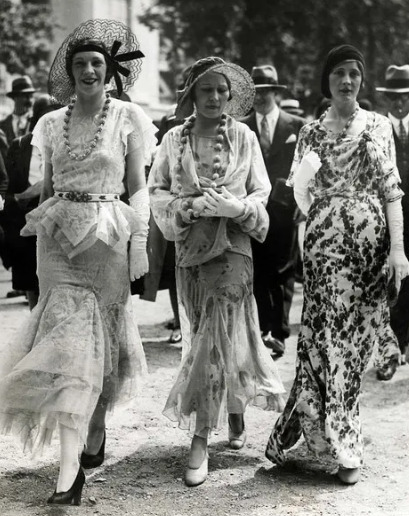

1940s:
Suit dresses with considerably structured including more structured shoulders, belted waists and A-line skirts. As a result of wartime rations, the goal was to repurpose clothing. However, with the end of the war, fashion became more spirited. While silhouettes remained similar, ruched fabric, beads and accessories became more evermore present within designs.
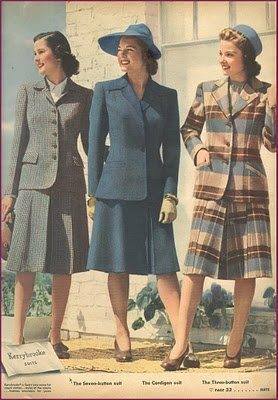
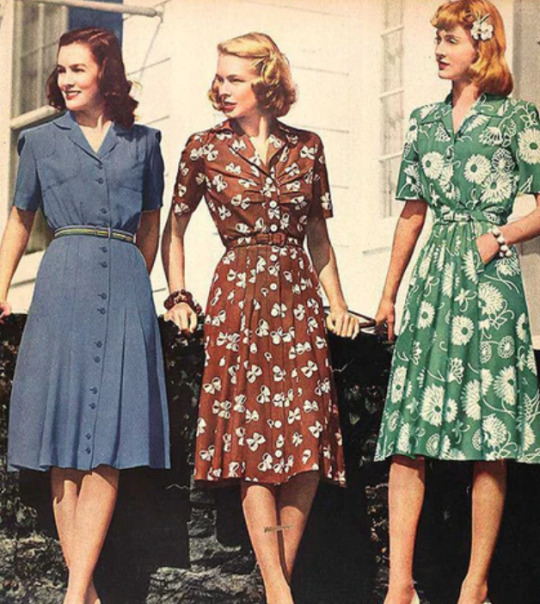
1950s:
Tea-length dresses were now all the rage. Dress makers used tulle and chiffon as fabrics to create fuller skirts and accentuated waists for the dresses. The hourglass figure was still dominating. Dior was one notable fashion house that reflected these trends but also extended this beyond tea-length dresses to coat dresses and evening gowns.


1960s:
Sheath dresses were all the rage, often worn with gloves for a more formal look or could be dressed down for everyday wear. The later period of this decade saw hemlines rising, leading to the infamous "miniskirt mania" peak. To complete the mod look, a chunky low heel and or knee-high boots and a baret were staples.
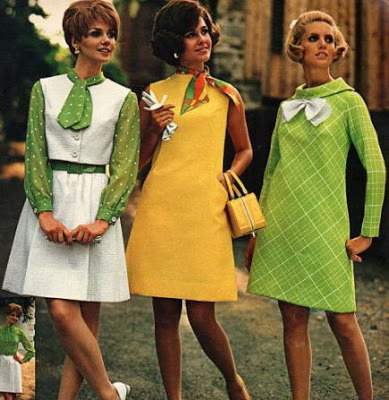
1970s:
Here is where the jumper dress took over, usually worn over turtleneck tops or button-down blouses. Yet, the mid-70s experienced the takeover of halter necks, belted waistlines, sequins as well as lamé fabric and breezy dresses by virtue of Studio 54 and disco.

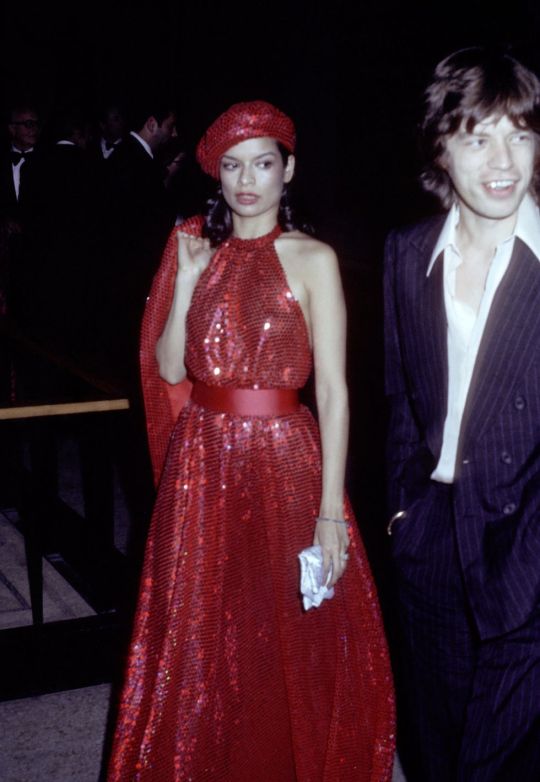
1980s:
This era of fashion experienced a variety of different trends. Firstly, shoulder pads were everywhere. There was also an abundance of polka dots, and bold matching accessories. The 'big shoulder' look continued into the mid-80s with an inclusion of bright colours but now, tapered hemlines were rising in popularity. The late-80s was infamous for replicas of "the naked dress", inspired by Cher's rhinestone-encrusted sheer panelled dress coupled with fringe and beads.
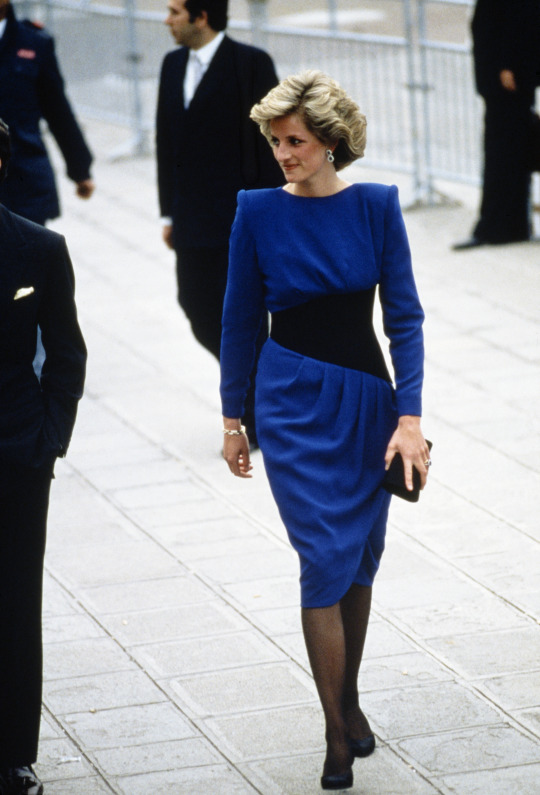

1990s:
Minimalism was vast within this era! We saw many spaghetti-strap dresses, shawls and slinky satin fabrics. A far cry from the lavish styles of the 1980s.
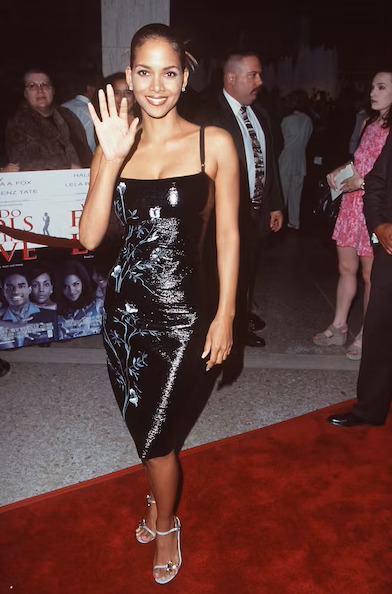

2000s:
This era of fashion, frequently known as Y2K, was focused heavily on fabrics and patterns and midriff-baring silhouettes. However, the later years of this decade saw retro and vintage inspired dresses which could be characterised by a form-fitting bodice that gave way to flouncy skirts.
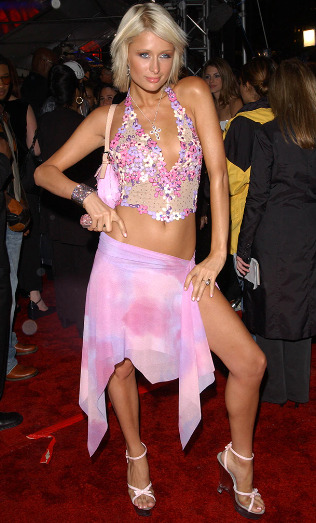
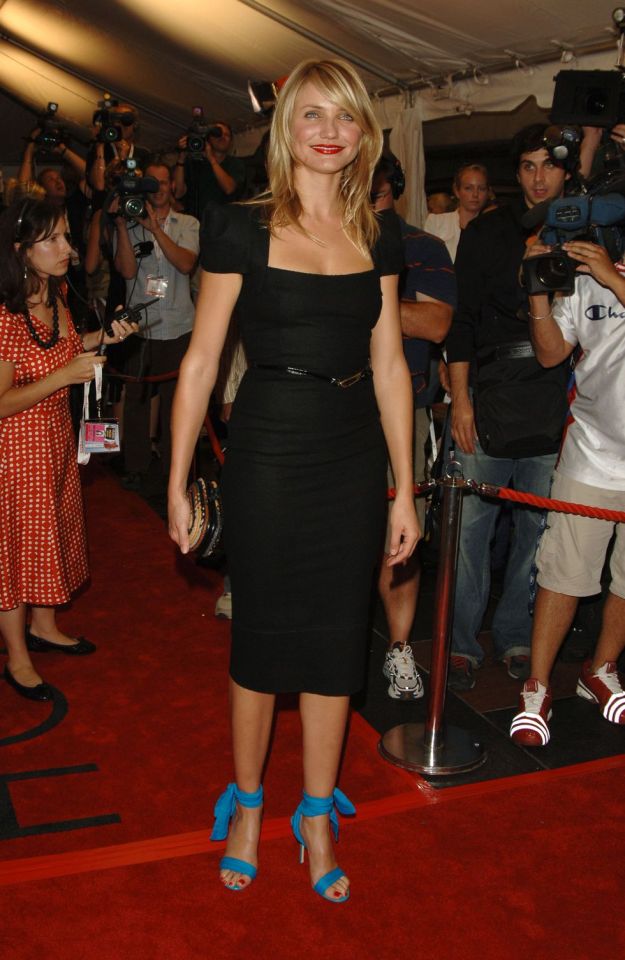
2010s:
Some regard 2010s as perhaps one of the worst decades for fashion. Nevertheless, the bodycon bandage dress was perhaps considered a staple as well as a rise in popularity of cutouts. However, as the decade progressed, haute couture and everyday fashion came together, statement pieces flooded the red carpets.
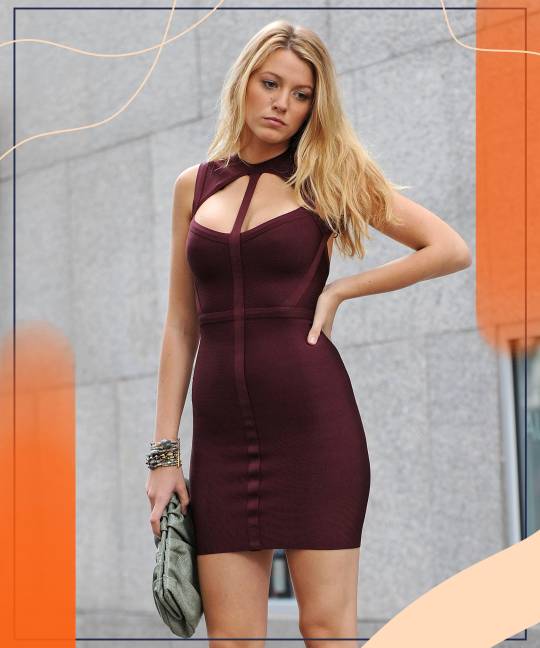
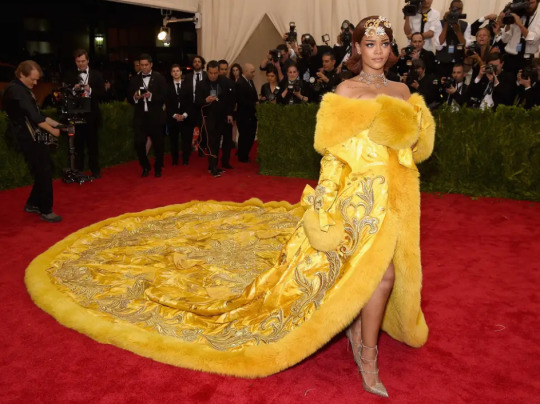
2020s:
As can be seen throughout, dresses have evolved substantially. Due to the pandemic fashion experienced a shift with leisurewear becoming a common way of dressing. However, one such dress that made its mark was the "Cult Gaia's Serita" dress. The style of this famous dress has now been immitated by countless brands is perhaps now a Summer staple style.
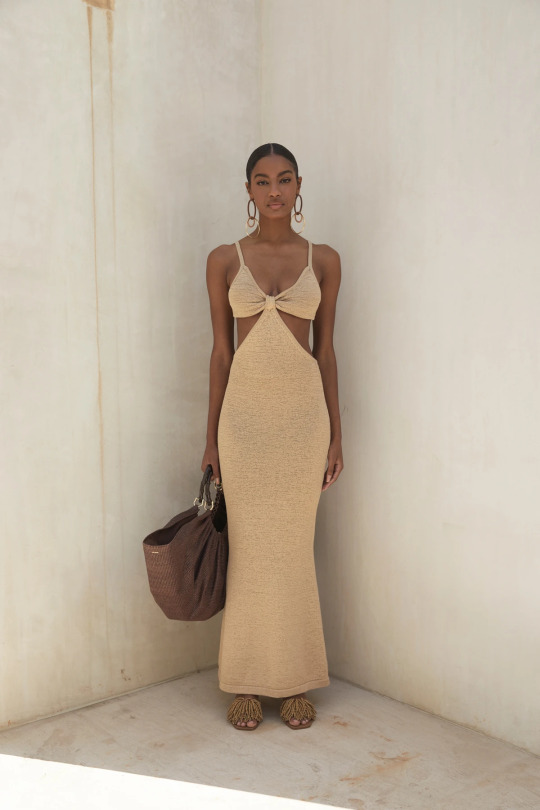

Source: Harpers Bazaar
Can you see any significant features of these dress styles and trends? Check out the garments of the University of Lincoln's BA Fashion students collections on Sew In Style's other social media platforms and see if you can notice if any of the eras discussed might have inspired their collections!
Instagram
TikTok
Pinterest
#sewinstyle2023#sewinstyleblog#universityoflincoln#sewinstyle#fashionstudents#fashionblog#fashiondesigners#designer#fashiondesign#fashiondesigner#bafashionlincolnuniversity#mscfashionmanagementlincolnuniversity
1 note
·
View note
Text
The Fashion Design Process
The fashion design process can vary substantially from designer to designer, company to company etc. Some people or organisations may undertake every step possible whereas others may skip some or only utilise the steps that are most relevant to them and or their specific project. We will explore the 9 most common steps involved within the fashion design process.
Step 1: Mood Boards / Ideation / Inspiration
The first step begins with exploring the initial ideas. Usually attributes of inspiration of the designer will be collected from Pinterest, magazines, social media, nature, etc, to be then compiled and organised within a mood board or perhaps multiple mood boards.

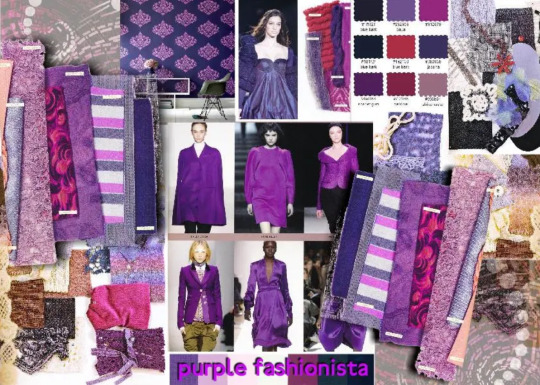

Step 2: Fashion Illustration / Sketches
After inspirational images for garments have been compiled, the designer will begin drawing up initial sketches. This is usually about getting ideas on paper, trying combinations, seeing what works and what may spark transformative ideas. Eventually the designer may narrow down these sketches to the final designs which may allow for more detailed sketches and consideration of specific fabric and material swatches.

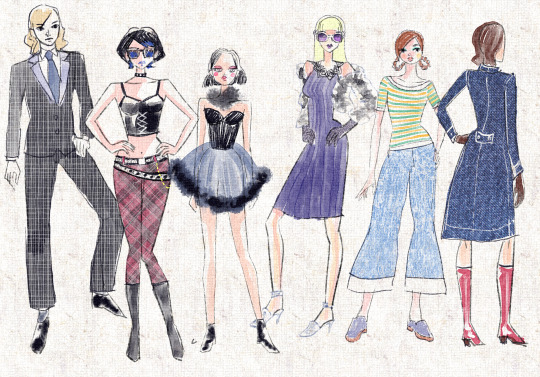
Step 3: Technical Sketches
Technical sketches may be produced after. A technical sketch is essentially a "blueprint," for the designs. In this state it is critical to consider the correct construction of the garments the designer wishes to produce.




Step 4: Tech Pack
A technical sketch is often used to create a Teck Pack for each specific garment. The silhouette and design will be used to determine construction, details and specs. Fabric and trim options will also be considered. Frequently within this stage, the Teck Pack will be sent out for factory and fabric sourcing.

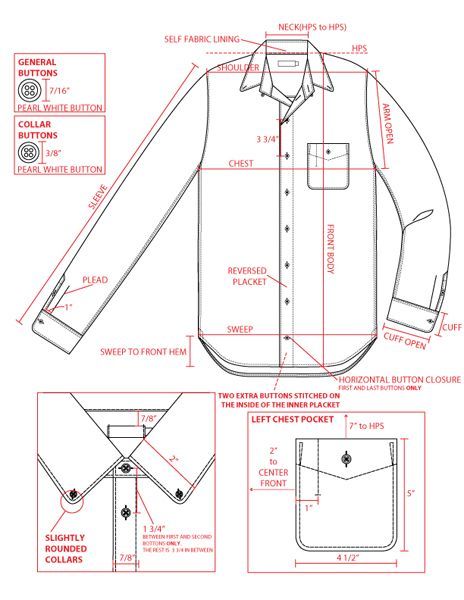
Step 5: Sourcing
Within the sourcing stage, people might wish to source a place for manufacturing, trims and fabrics (from a supplier) as well as labels and packaging.

Step 6: Sampling
After the factory and materials for the garments have been sourced, the Tech Pack can be updated to reflect this and then sent to the factory for sampling. Sometimes, the factory will have to substitute materials and patterns with a close match. This is usually done to establish the correct garment fit while the correct fabrics and trims are in development. The final sample will (or should be) 100% to spec.
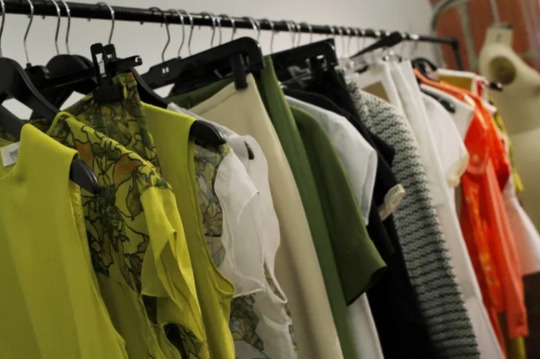

Step 7: Fit & Review
The samples are now complete. Now they need to be reviewed and Teck Pack adjusted if necessary. The cycle of review is as follows:
[Teck Pack -> Sample -> Review -> Update Teck Pack -> Send]
This will continue until the designer is happy with the final prototype.
Step 8: Design Approval
The sampling process is now complete, the designer is satisifed, now it needs to be approved. All details will need double checking to ensure the Tech Pack is 100% accurate, there's no room for mistake at this stage.
Step 9: Production
The garments will now be produced. This will be via a factory or the designer themselves (if it is a DIY garment).




Source: Points of Measure
A number of these steps (although perhaps slightly altered) will have been taken by the Lincoln fashion designers to complete their final collections. Check out Sew in Style's other social media platforms to view the designer's work of this collaboration.
Instagram
TikTok
Pinterest
#sewinstyle#sewinstyleblog#fashionblog#fashiondesigner#fashiondesign#fashionstudents#universityoflincoln#sewinstyle2023#the process of fashion design#fashion#designer#fashiondesigners#bafashionlincolnuniversity#mscfashionmanagementlincolnuniversity
1 note
·
View note
Text
I Feel As Mad As A Hatter
Have you ever felt like you were 'going mad' or experiencing symptoms of 'madness'? Well, thats how Shpresa Llaka felt, which is what inspired her collection "Mad As A Hatter". While Shpresa had already been exploring Alice in Wonderland as an initial subject of inspiration for her final-year fashion collection, upon sustaining a head injury as a result of falling down the stairs, she noticed that she was experiencing a variety of symptoms similar to that of the Mad Hatter, and with that, the inspiration behind this collection emerged.
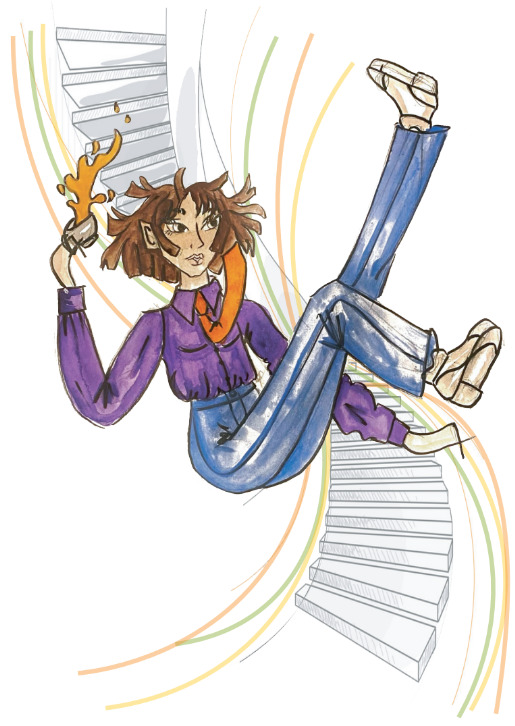
The Purpose:
Shpresa expresses that through her collection, she wanted to illustrate her "madness" and her feelings through her designs. These designs are also propossed to not only potentially help Shpresa, but also others that may have or are going through the same thing. Furthermore, through use of illusion and print to illustrate the symptoms Shrpesa experienced, the wearer or those around the garments could feel the same feelings as her.
The Symptoms:
Shpresa expressed experiencing what she refers to as Déjà vu episodes where things she was doing felt familiar, like she'd done them before. This would be followed by feeling dizzy, followed by blurred vision. She also explains that if she did not remember anything before, during, or after an episode, she would forget a last memory. Shpresa explained how frustrating this was, especially when she "felt mad," when others could not understand how she was forgetting events from the previous week or year or forgetting places she had been to.
Research - Brain Scans & Lenticular Imagery:
Upon looking into brain scans, Shpresa noticed that within coloured, 3D scans, they looked like many rubber bands. Although the designer wished to try create something to represent this, upon completing dealer research, she realised that people did not understand or know how she felt or what she went through. Instead, Shpresa looked into lenticular imagery and illusions to create her collection. Ultimately, after completing further dealer research, the designer reached the conclusion that wearers did not wish for her face to be present upon the clothes, therefore, she created an illustration of herself and the Mad Hatter to make this more appealing to potential wearers.
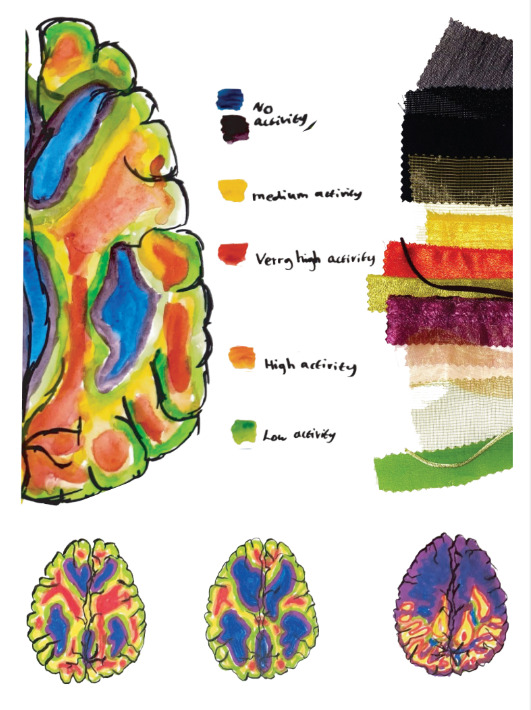
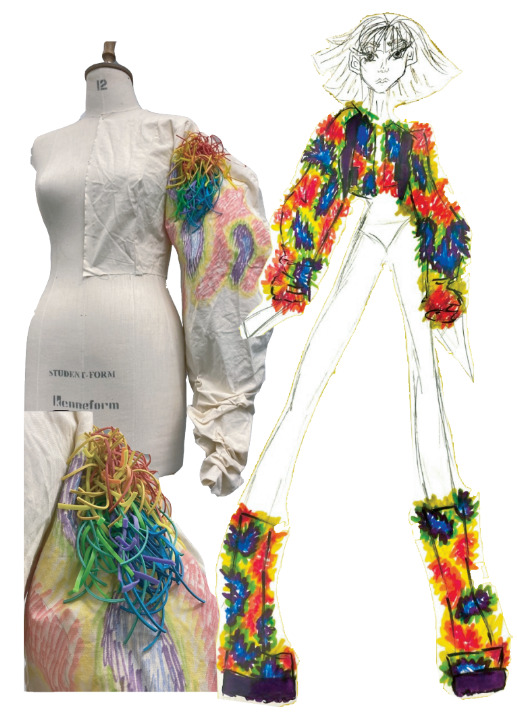
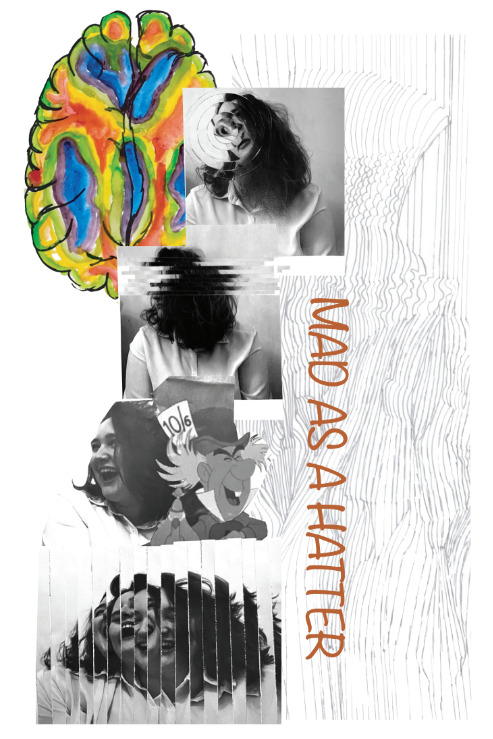
The Stages of Madness:
Stage 1: To exhibit this, Shpresa created a high neck top to symbolise the madness slowly taking control. She also created a frayed jacket with colours bursting through, this representing the colours of brain scans. The loose threads of this jacket represent that one might be "hanging by a thread," but in contrast, the wraps and ties of the bottoms represent one trying to keep themselves together in an attempt to appear "normal,".
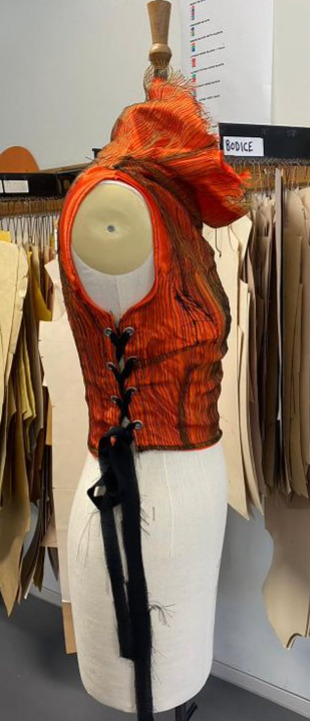
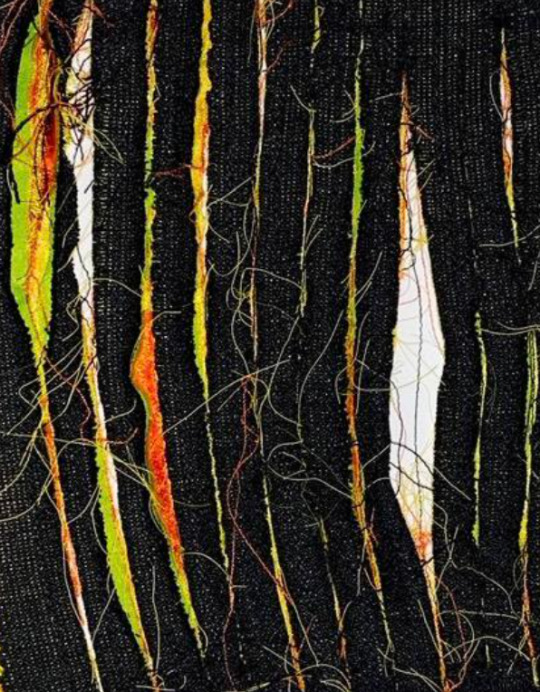
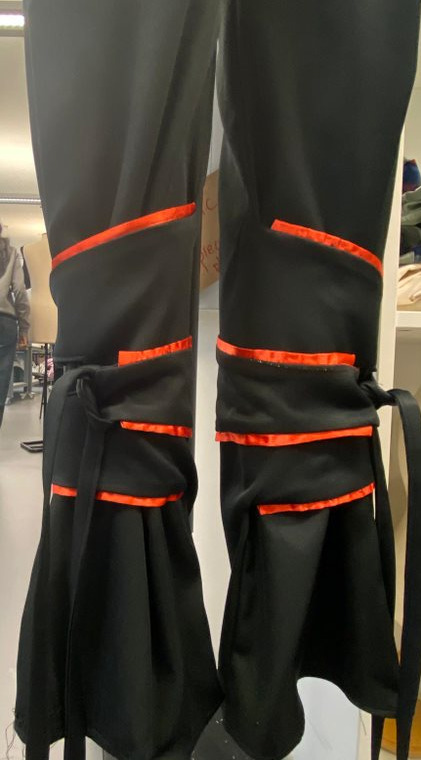
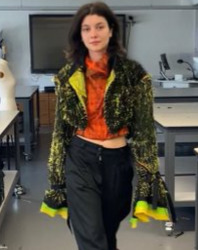
Stage 2: The petticoat of Shpresa's collection has two layers, one yellow, and one green. These exhibit the layers of the brain, the skirt is also "poofy," to represent loosing oneself and thus feeling out of control. Additionally, the print on the skirt is a line print of both Shrpesa and the Mad Hatter, this is, however, only visible up close, on first glance it just appears to be a plethera of lines. This was done to represent that one cannot always tell if something is wrong and that things are not always as they seem. The top for this stage is a shirt and tie, but the tie is not real, it is instead folded into the top to give the illusion of a tie, also suggesting that things are not always what they seem and that the wearer is attempting to appear "normal,".
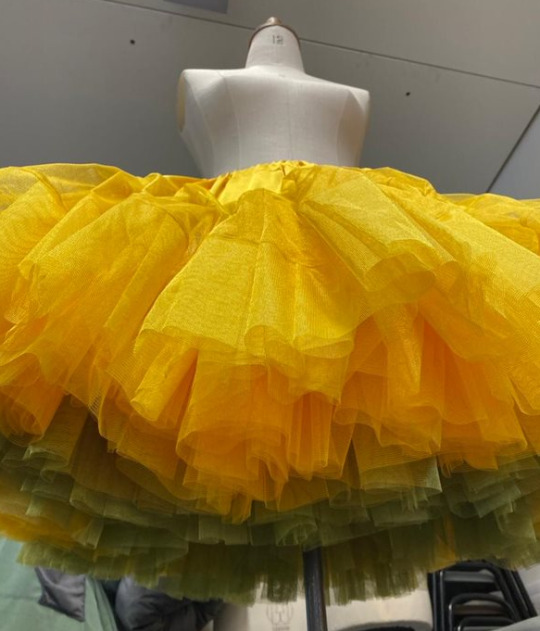
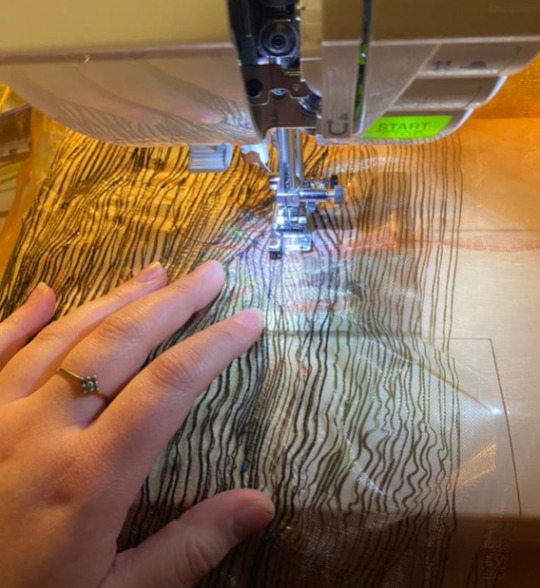
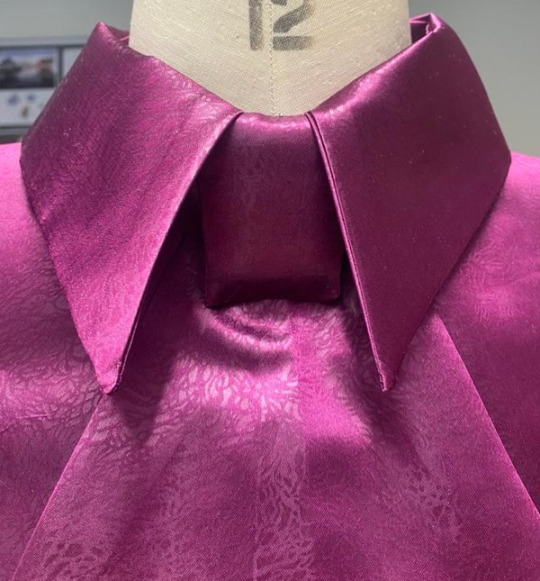
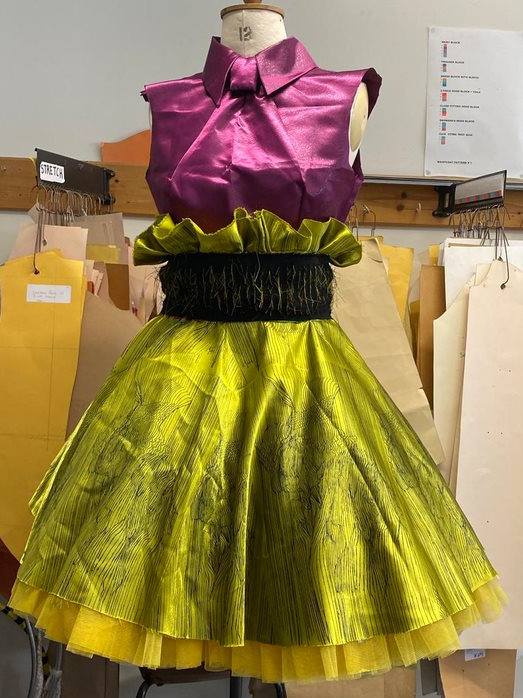
Stage 3: For the final stage of this collection there is a top with a print of Shpresa and the Mad Hatter with lines going through, representing blurred vision. Uneven ruffles are also present, bursting from the front and back to exhibit the madness "bursting through,". The bottoms are double layered with lines going through in opposite directions. When the wearing is walking, this may make ones eyes "go funny," illustrating blurred vision and the symptoms that both Shpresa and the Mad Hatter experienced. Shpresa has indicted that this last stage of her collection possesses more purple, rather than a lot of colour. This is because a lot of colour is supposed to indicate a healthy brain, whereas the purple represents inactivity within the brain, thus displaying "madness,".

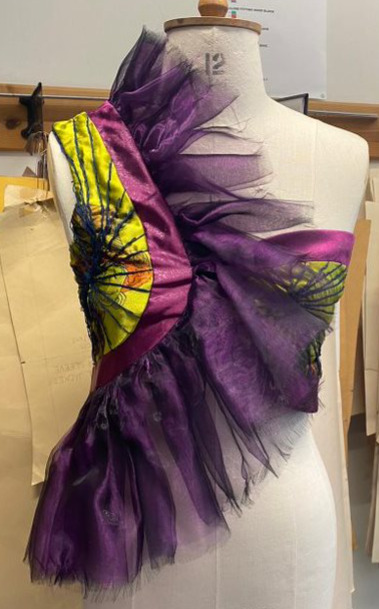
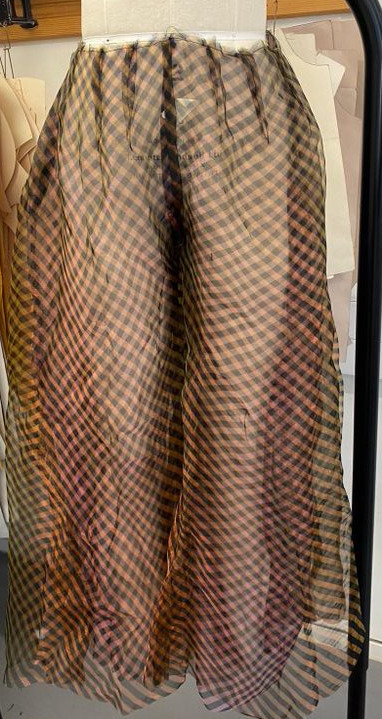
Mad Hatter's Tea Party:
Below are a selection of images from the designer's photoshoot, displaying her beautiful and creative garments.
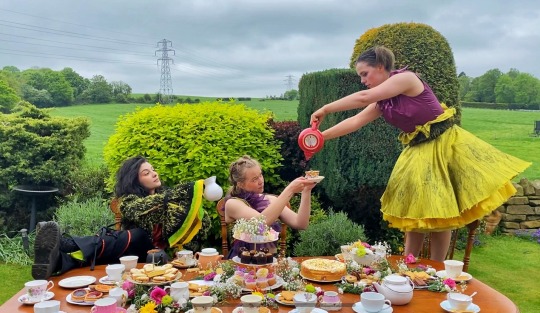
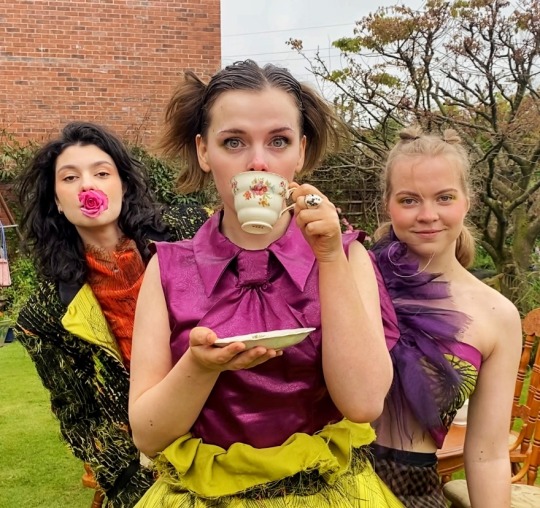
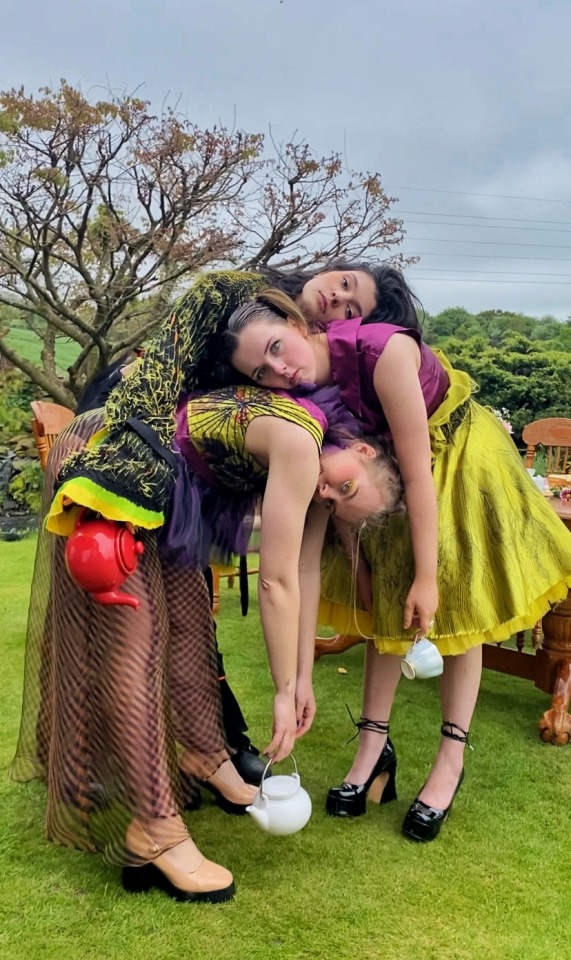
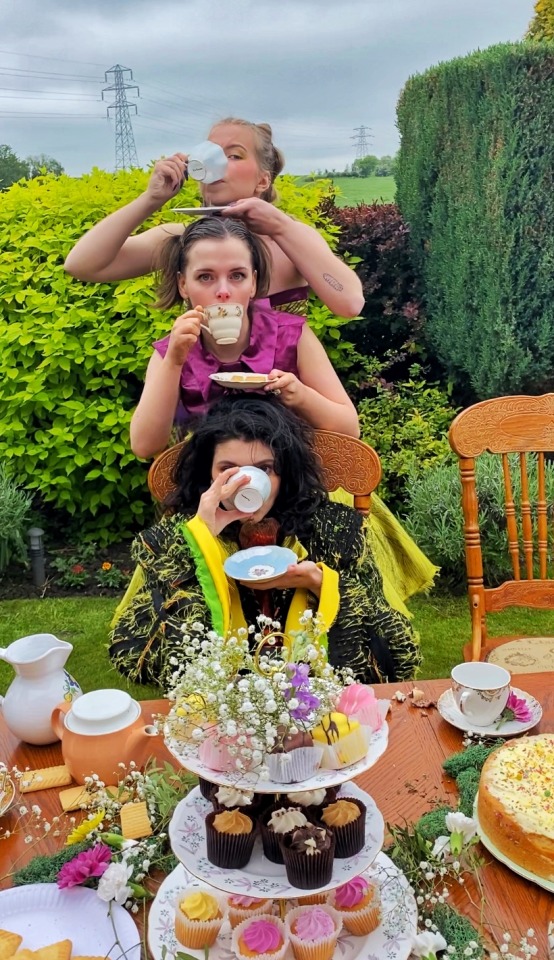



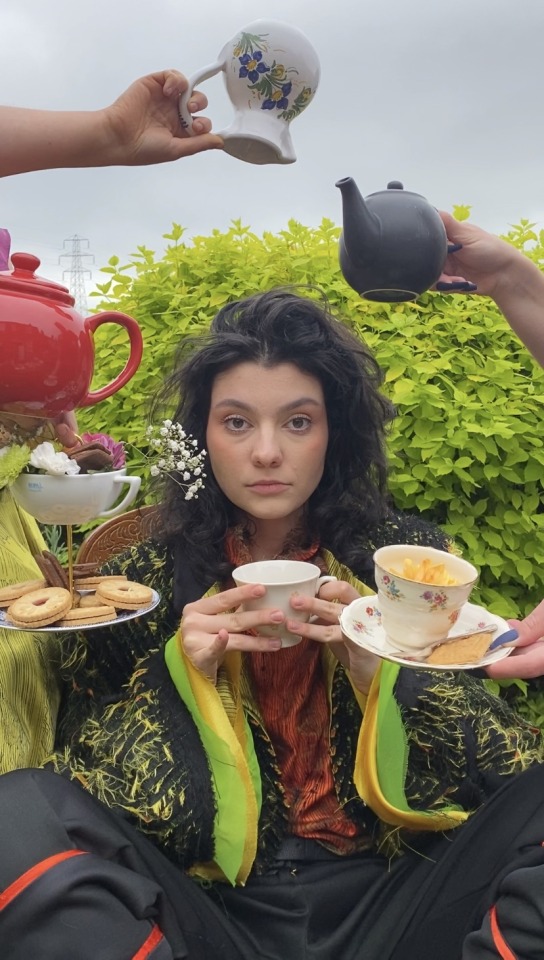
Please check out Sew in Style's other social media platforms to view additional work by this talented designer and others alike!
Instagram
TikTok
Pinterest
#sewinstyle#sewinstyleblog#fashionblog#fashiondesigner#fashionstudents#universityoflincoln#sewinstyle2023#Mad As A Hatter#Mad Hatter#Mad Hatter's Tea Party#fashiondesign#bafashionlincolnuniversity#mscfashionmanagementlincolnuniversity
2 notes
·
View notes
Text
Choose Colour
Bright colours are a common theme within these collections. Whether it be to grab the attention of the viewer or as a subtle pop to elevate a design. Sometimes colours are used to tell a story or to express an emotion. Shpresa’s skirt being a bright yellow as well as being big communicates that capturing the attention of the viewer is important. Emily’s use of shapes with the colour showcases movement. Ruth however, has used panelling in their design to create a contrast and then used the same colour of thread to embroider onto the jacket.



Instagram
TikTok
Pinterest
#sewinstyle#sewinstyleblog#fashionblog#fashiondesign#fashionstudents#fashiondesigners#universityoflincoln#sewinstyle2023#bafashionlincolnuniversity#mscfashionmanagementlincolnuniversity
1 note
·
View note
Text
Creating Fashion Creates Consumption
Cheap subpar quality clothing is now readily accessible to the majority of the general public which has generated an increase in consumption. This and the increase of clothing production caused by the development of society has meant throwaway culture has become a norm. The fashion market is very saturated with no apparent signs of slowing down.
Our designer Grace has a keen interest in giving discarded items a new life. One of their goals is to produce sustainable clothing and inspire and encourage others to at least think about what happens to garments after they are thrown away. Grace explains that we should see clothing as what it truly is “a piece of history created with a purpose to be worn and cherished”. Below is a dressing gown coat made from blankets.

Grace’s collection was heavily influenced by the second hand market. The title of the collection is “What a Load of Sh*t”. This corresponds to the negative impact the fashion industry is having on the natural environment. Grace states that “having to reuse to survive is a big element of my final collection and designs, also including an element of trash fashion, upcycling, and recycling clothing”, which can be seen through the materials used. The aim for this collection was to bring attention to the fact that you do not need to spend money or have a lot of resources in order to create art and fashion. For example, Grace used their parents’ old uniforms in a few of the garments. Below is one design incorporating elements from the uniforms.
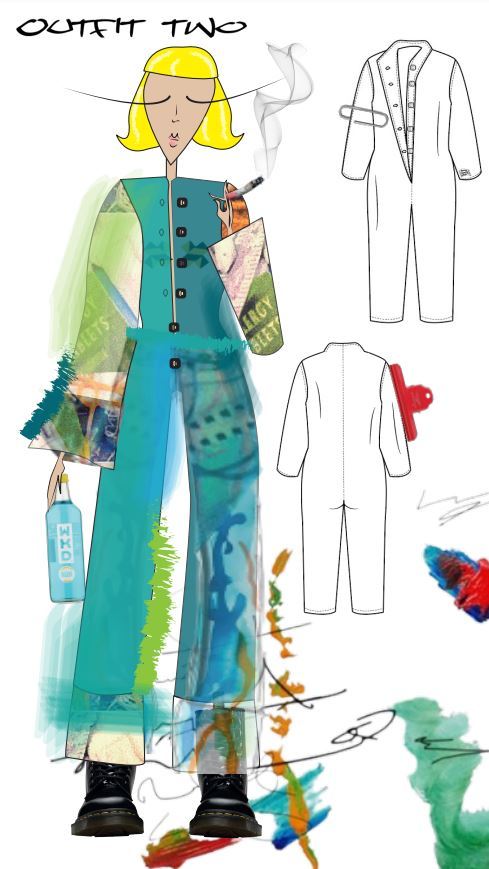
Instagram
TikTok
Pinterest
#sewinstyle#sewinstyleblog#fashionblog#fashiondesign#fashionstudents#fashiondesigners#universityoflincoln#sewinstyle2023#bafashionlincolnuniversity#mscfashionmanagementlincolnuniversity
1 note
·
View note
Text
The Significance of Inspiration
Inspiration to create can come from a variety of places. Whether it be from a personal experience, a simple observation, or a need to make. Mood boards are often the best way to express ideas as this allows for a quick and fairly simple way to translate ideas. Using images from social media, creating a physical collage, and taking photos are all viable forms of gathering visuals that represent your inspiration. Below are a few of our designers’ mood boards they used to create the initial visuals that influenced their final collections. See if you can guess where their inspiration may have come from.


Instagram
TikTok
Pinterest
#sewinstyle#sewinstyleblog#fashionblog#fashiondesign#fashionstudents#fashiondesigners#universityoflincoln#sewinstyle2023#bafashionlincolnuniversity#mscfashionmanagementlincolnuniversity
1 note
·
View note
Text
From Sketch to Sewing
Sketching is an important part of the design process. It is the phase where ideas and concepts become tangible garments. Alterations to designs can still be made after this but it will tend to be quite minor details changing because of external factors. For example: acquiring a specific trim could present more difficulty so a designer could then accommodate for this by using a different colour trim or a slightly different style. Sketches are there to guide the pattern making process. A sketch and a pattern are not the same thing. A pattern will make the sketch into a reality by having specific measurements allowing for transformation from paper to fabric.
Sometimes sketches are not the first thing created and that’s completely fine. Draping fabric first can lead itself useful when working with particular fabrics. If the design needs to adapt to the materials used, it is not necessarily important to do a sketch in the beginning. Understanding how the fabric lays on the body will inspire the sketch. An example material for draping would be satin. The movement of the fabric lends itself well to enhancing elegant attire which is why it can often be seen in evening wear.
Take a look at our designers’ work to see the similarities between their sketches and final garments:
Instagram
TikTok
Pinterest
#sewinstyle#sewinstyleblog#fashionblog#fashiondesign#fashionstudents#fashiondesigners#universityoflincoln#sewinstyle2023#bafashionlincolnuniversity#mscfashionmanagementlincolnuniversity
1 note
·
View note
Text
Welcome to the blog of Sew in Style, a multi-platform collaboration between the MSc Fashion Management and the final year BA Fashion Design students at the University of Lincoln.
Throughout this blog we will be exploring our Lincoln designers' collections a little more in depth. Inspiration, sketching, and reasoning are just a few of the areas we will discuss!
Join us by checking out and following our other social media platforms where we will showcasing these collections and where you can meet these incredible designers!
Instagram
TikTok
Pinterest

#sewinstyle#sewinstyleblog#fashiondesign#fashionstudents#fashiondesigners#universityoflincoln#sewinstyle2023#bafashionlincolnuniversity#mscfashionmanagementlincolnuniversity
2 notes
·
View notes